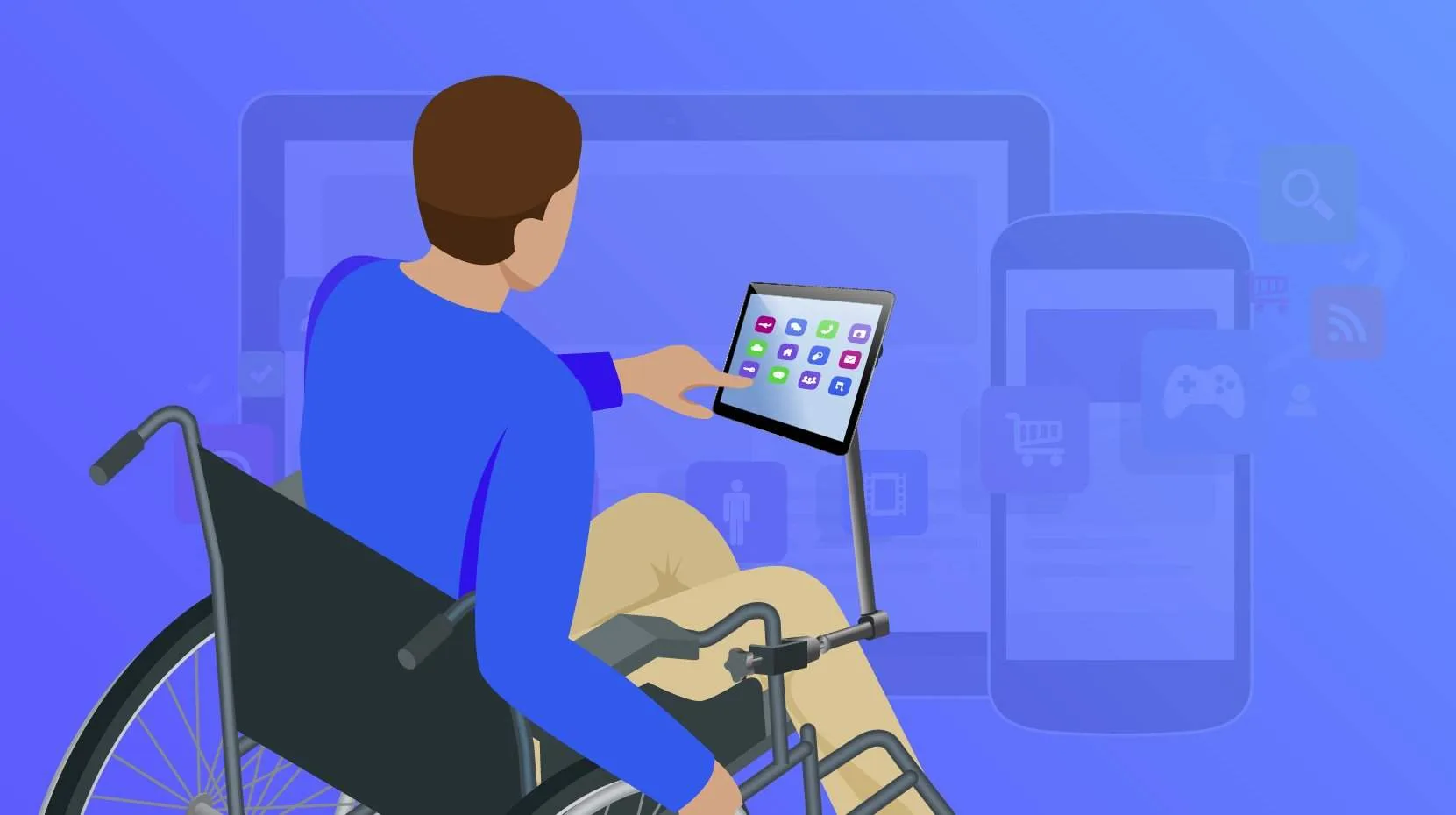The concept of technology helping the disabled is a timely one. This is because many disabilities become evident at an early age, making it difficult for them to gain independence and participate in the community as others.
This has prompted organisations such as the Special K Foundation to seek out support for people with disability who wish to use technology. However, technology companies must also participate in this program to stay competitive.
Technology is becoming an essential part of life for everyone. It can be found everywhere, from the gadgets available in Wal-Mart to the mobility scooters that some wheelchair users have learned to drive. In the home, computers are often used to make money by doing online business or for hobbies such as scrapbooking.
At school, the use of technology is widespread, helping students learn math, music, and social studies. For businesses, the Internet provides a platform that allows them to expand and reach a global audience.
For individuals with disabilities, technology is key in gaining self-confidence and increasing their ability to take advantage of opportunities offered by the Australian communities.
There are many ways that technology can help the disabled. One of these ways is through multimedia, such as Braille books or signed audio tapes. These can help visually impaired users better understand books or signed documents.
By hearing a person’s voice over a computer screen, they are able to read the words as well as the art behind it.
Technology also assists users with hearing and with seeing. Multimedia systems, such as hearing aids or TV screen readers, help them enjoy television programs or movies.
Blinds and curtains can also be automated with technologically assisted devices, such as accessible light kits or thermostat remotes. These technology systems also help users with visual impairment, as well.
Technology also helps the disabled to improve their self-esteem. Software programs, such as typing games, are especially useful. This type of game lets the user practice typing and improves their hand-eye coordination.
Other software programs are more interactive, allowing the disabled to work through problems such as slow response from computers.
There are many assistive technologies that are designed to aid those who need it most. Some of these technologies include electric wheelchairs, mobility aids, walkers, artificial limbs, and wheelchair cushions.
In fact, there are so many assistive technologies that it is difficult to name them all. One example of an assistive technology that is helping the disabled is a form of window tint that covers the front part of a car to make it safer for those who have difficulty seeing out of the car. This technology has helped countless people see the world around them.
The disabled also have access to special technology that allows them to communicate. Aids that enable visually impaired users to send and receive messages can make everyday tasks much easier.
Many people who are unable to speak have found technology that allows them to use written words like a Braille or sign language.
Technology is also helping to eliminate some of the strain and stress that can be placed on elderly and disabled individuals. Medical equipment has improved in its ability to withstand adverse conditions and stay working.
In the past, hospital visitors would have to call a phone line in order to request information. Now, visitors can just pull up the information on their computer. Also, medical equipment provides for the fact that visitors can get the information they need with greater ease than ever before.
There are many more pieces of technology now that help the disabled. For example, manufacturers have begun designing wheelchairs and other mobility devices that have the same safety and durability as traditional prosthetics.
Also, there are software programs that enable those who have some type of physical disability to learn to use computers. Certain computers are especially made for people who have certain disabilities, such as low-vision users and those with arthritis.
In the past, these individuals had to use typewriters or other technology that was difficult to use or was too slow.
With more technology becoming available, the world is becoming a better place for everyone. Those who have some type of disability can greatly improve their quality of life if they use technology to make their life easier.
This technology is already changing the world around them, and the world will become even more able to help those who have certain disabilities, and their lives will be able to function more fully. This technology is only continuing to grow, making life better for everyone.
From advanced prosthetics to smart home devices and assistive apps, technology is bridging gaps and creating opportunities for a more inclusive society.
List:
- Prosthetics and Exoskeletons: Advanced prosthetic limbs and exoskeletons are enabling greater mobility and functionality for amputees and individuals with mobility impairments.
- Screen Readers and Text-to-Speech Software: These technologies help individuals with visual impairments to access digital content and navigate the internet independently.
- Wheelchair Accessibility Apps: Apps that provide information on wheelchair-accessible routes, facilities, and venues help wheelchair users plan their journeys and activities more effectively.
- Voice Recognition Software: Allows individuals with mobility impairments or conditions like carpal tunnel syndrome to control computers and devices through voice commands.
- Smart Home Technology: Devices like smart speakers and home automation systems can be voice-controlled, making it easier for people with disabilities to manage their homes independently.
- Augmentative and Alternative Communication (AAC) Devices: These assistive devices help individuals with speech or language impairments to communicate effectively.
- Hearing Aids and Cochlear Implants: Technological advancements in hearing aids and cochlear implants improve hearing capabilities for individuals with hearing impairments.
- Accessible Gaming Technology: Adaptive gaming controllers and software modifications enable people with disabilities to participate in and enjoy video games.
- Telemedicine and Remote Monitoring Devices: These technologies facilitate remote healthcare access and monitoring, benefiting individuals with disabilities who may have difficulty accessing traditional healthcare settings.
- Wearable Health Trackers: Devices that monitor vital signs and activity levels can assist individuals with disabilities in managing their health and well-being more effectively.
Assistive Technology
Assisted technology is a broad term for rehabilitation, assistive, and adaptive devices for the older aged population or those with certain disabilities.
Often people with disabilities find it difficult performing daily activities of life alone or utilizing devices to help them perform daily tasks. The ability to function independently is something that everyone would like, especially for those that may suffer from health conditions that require daily medication.
An increasing number of individuals are taking advantage of the opportunities available through state and federal programs that provide free or inexpensive devices to improve the lives of those who are physically challenged.
The goal of assisting the older adult or disabled individual is to increase independence and improve work around skills. Audio books for example, can be used to learn new tasks, and to practice basic motor skills such as turning on the lights or reaching for items.
Other assistive technology options that can help the disabled individual include grab bars for reaching small objects, bathroom access chairs or scooters, and seating with armrests or back supports.
Audio books can be very beneficial because they are able to teach the user new skills, which in turn helps to increase their overall learning abilities.
Audio books also provide a relaxing environment that encourages the user to read and to participate in conversation. This not only helps the individual to learn new tasks but also relearn common motor skills.
Another way to provide help for those who are physically challenged is by using wheelchair lift chairs. Wheelchair lifts for residential use to provide easy and convenient access to homes, apartments, condos, or offices.
These devices can be adjusted to accommodate different users depending on their height, weight, and other specifications.
Many people who use wheelchairs do not feel comfortable operating the controls of such devices on their own, which is why many insurance companies will cover the cost of the device or will make it available as a benefit to their policy.
Additionally, there are many self-adhesive pads, which plug into the wall or floor, to provide easy access to the mobility challenged individual. These mobility devices can help people to safely enter and exit their home, as well as to gain easier access to stairways and to enter and exit vehicles.
Conclusion:
As technology continues to evolve, its potential to improve the lives of individuals with disabilities remains limitless. With ongoing advancements and innovative solutions, the future promises even greater inclusivity and accessibility.
By harnessing the power of technology, society can continue to break down barriers and empower individuals with disabilities to live life to the fullest.







